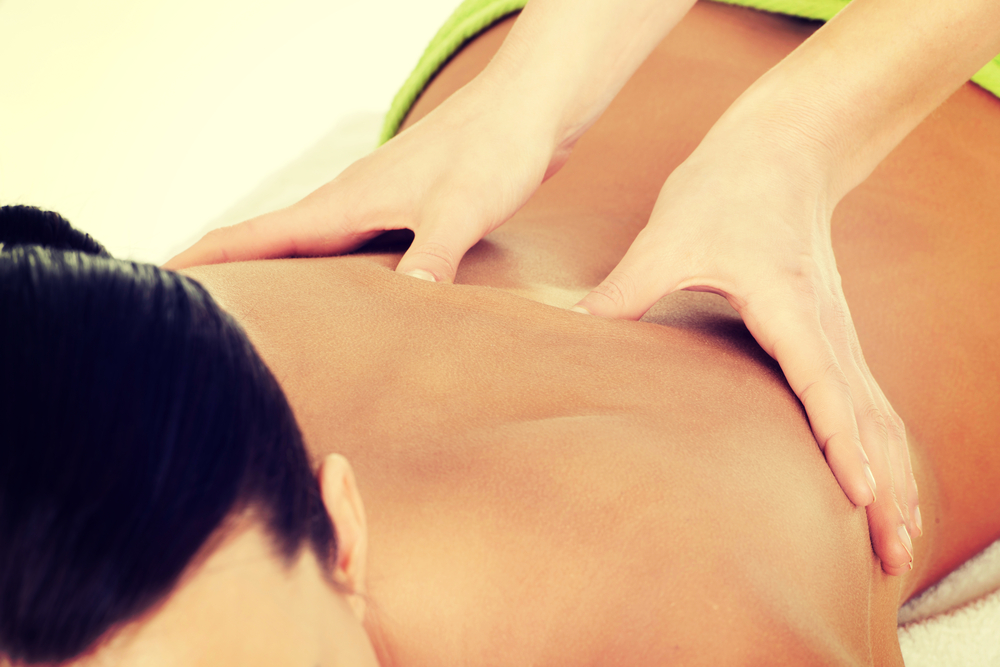Massage Is a Critical Component of My Healing
Written by |

Sometimes, we may have so many levels of embedded issues that it can be difficult to know where to start. For my horse Arti and me, massage and acupressure were critical to physical recovery. I don’t remember how I stumbled upon my first massage therapist, but I’m thankful that I did — Heather was amazing. For Arti, I got a recommendation from a friend for an equine bodyworker (I hadn’t known such a thing existed) and gave her a call.
Arti was terrified the first time he met Lorinda, who specializes in equine myofascial release and trigger point therapy. I’d had him for about a year by then and his nervousness had improved significantly, but strangers were still a no-go for him. However, Lorinda’s sense of calm and patience helped him to relax and he eventually allowed her to put her hands on him. She began with acupressure. It was apparent that Arti wanted to release the tension coiled up inside him, but was afraid of letting his guard down and showing vulnerability. Lorinda broke through to him where others had struggled, reminding me of the value of continuous patience for both my sake and Arti’s.
Meanwhile, Heather knew a variety of techniques to use on me; thankfully she didn’t have a one-size-fits-all approach. If one area needed deep tissue massage and another required trigger point treatment, that’s what she did. She was impressed by my level of physical activity and floored by the depth of my bodily dysfunction. You see, when I was 15, I was fouled in a soccer game and flipped literally heels over head in the air, landing on the back of my right shoulder. I broke my collarbone, tore my trapezius muscle, dislocated my shoulder, and stretched and strained who knows what else. At the time, I didn’t have a diagnosis of Ehlers-Danlos, so doctors treated me like a regular patient. The break healed and I started physical therapy (PT).
The more PT I did, however, the worse my pain and range of motion became. I hated PT. It hurt and I felt like every session was a step backward instead of forward, so I quit after several months. I spent the next seven years with debilitating shoulder and back pain with maybe 20 percent range of motion in my right arm. Stubbornly, on days when my arm hurt too much to move it across the page, I wrote by sliding my notebook under my hand while keeping my arm still. I could brush my teeth, eat, and do almost everything with my left hand aside from writing, so I got by. But my shoulder hurt so badly that if I even rolled over in bed at night, I would wake up with sharp, stabbing pains. Very, very slowly, Heather began to deconstruct the mountains of scar tissue, calm the inflammation, and commence the complex task of helping me to heal.
As I started to get better, my pain slowly receded to less soul-crushing levels. I recognized then the degree of pain with which I had been living. It seems that my mind had mostly blocked it out. I knew that my body hurt, but it didn’t often feel like typical pain — it’s difficult to explain. As Heather began to work on me, the muscles that I hadn’t been using were suddenly alert again, and they made it clear that they were “angry” before they began to improve.
Over months of careful work, I regained more use of my right arm, but if I pushed the limits, I would backslide. It seems like that whole “patience” thing I’d been working on was going to come in handy in more ways than one.
***
Note: Ehlers-Danlos News is strictly a news and information website about the disease. It does not provide medical advice, diagnosis, or treatment. This content is not intended to be a substitute for professional medical advice, diagnosis, or treatment. Always seek the advice of your physician or other qualified health provider with any questions you may have regarding a medical condition. Never disregard professional medical advice or delay in seeking it because of something you have read on this website. The opinions expressed in this column are not those of Ehlers-Danlos News or its parent company, Bionews Services, and are intended to spark discussion about issues pertaining to Ehlers-Danlos.





Leave a comment
Fill in the required fields to post. Your email address will not be published.